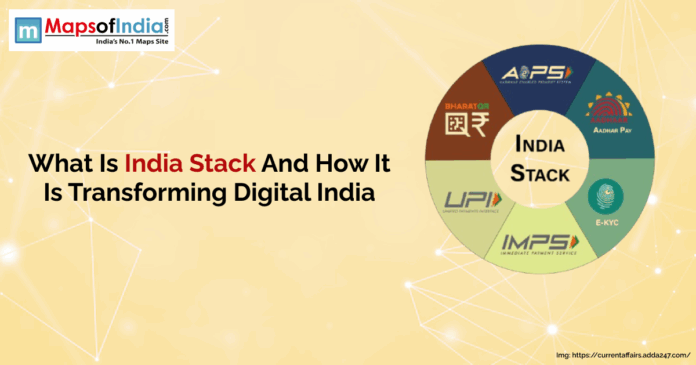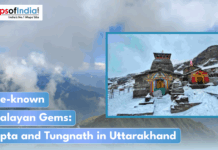Over the last ten years, India has silently experienced a digital revolution, and one of the trunks of all this is the India Stack technology framework. You have probably come across this term in the media, in policy discussions or around startups and fintech, but what is it all about? More to the point, how is it transforming the way we live, make transactions, define ourselves and communicate with the government?
Here in this blog, we will attempt to deconstruct what India Stack is, what its main elements and how it is transforming real India into Digital India, not to mention the rural side of the country as well as the urban startups.
Understanding India Stack: More Than Just Tech
In essence, India Stack is a collection of open APIs (Application Programming Interfaces), digital public goods that governments, businesses, startups, and developers can use the digital infrastructure to address practical challenges. A digital backbone or an ecosystem whatsoever, think of identity, think of payments, think of data, and think of documents, how they can be tied together in a way that we can provide paperless, presence-less, and cashless service.
It is constructed and operates in the context of Indian Digital Public Infrastructure (DPI), and it is one of the most massive digital initiatives the country, with a population of more than 1.4 billion citizens, has ever introduced.
The Four Key Players of India Stack
India Stack consists of four fundamental layers:
1. Presenceless Layer – Aadhaar
The presence of fewer layers enables the identity of a person to be authenticated even when the person is not present. This is driven by the world’s largest biometric ID system, Aadhaar. Any individual can now establish his or her identity online, using biometrics or over any other interface (be it in a bank, government office, or in the case of telecom), with Aadhaar.
The idea of Aadhaar became the initial significant component of India Stack. It provides unique identification and this is very critical in preventing frauds, duplication of accounts and corruption.
2. Paperless Layer – e-KYC and DigiLocker
Verification in an old-fashioned system is full of document piles. The paperless layer obviates the need for this. With the help of e-KYC (electronic Know Your Customer) and DigiLocker, people will be able to exchange documents and verify them online in real-time and in a secure way.
As opposed to having your Aadhaar card or your bank statements photocopied, you can now provide the provider with permission to access verified documents online. Driving license, PAN cards, and other certificates issued by the government can all be stored and even accessed on DigiLocker.
3. Cashless Layer – UPI and Digital Payments
This is possibly the most apparent component of India Stack to the common man. UPI has transformed the process of money exchanges in India. It takes only a mobile or UPI ID and anyone can instantly transfer money across the country, it is available 24X7, every day of the year.
UPI has brought financial inclusion to every corner of India, including street vendors and high-end retailers. There are currently more than 10 billion transactions done every month through the UPI, and this is evidence of how cashless India has become.
4. Consent Layer – Account Aggregator and Data Empowerment
The latest and most powerful layer of India Stack is the consent layer, introduced through the Account Aggregator (AA) framework. This allows individuals to control how their data is used.
Let’s say you want to get a loan. With your consent, your financial data, bank statements, mutual fund holdings, and income can be securely shared with the lender in minutes. You are always in control of what is shared, for how long, and with whom.
This layer gives power back to the user and enables a new kind of data democracy.
Real-Life Impact: How India Stack Is Changing India
1. Financial Inclusion for the Poor
Millions of people in India could previously afford the luxury of a bank account, as there was no India Stack. Now, with the help of Jan Dhan-Aadhaar-Mobile (JAM) trinity and e-KYC, it takes only a few minutes to open a zero-funds account even to a villager with no prior record with any banks.
The bazaar of UPI payment has ascended even to the tier-2 and tier-3 towns as well as metros. Small vendors no longer go through cash hassles since they accept payments in QR codes.
2. Faster Government Services
Whether it is Direct Benefits Transfer (DBT) or Scholarships Delivery, India stack enables subsidies and welfare to reach citizens in real-time without any intermediaries. Aadhaar authentication also eliminates corruption and leakage as it makes people who are supposed to access the benefits the only ones to do so.
3. Empowering Startups and Fintech
The creation of the India Stack has created the thriving fintech industry in India. Banking, different lending applications, insurance services, etc. All of them are based on Aadhaar e-KYC, UPI, and data APIs.
To illustrate this further, a fintech business can get its user onboarded within 5 min through e-KYC, make payments using UPI and evaluate creditworthiness using AA without requiring the user to step out of his/her house or get him/her to fill out fat forms.
4. Ease of Living
Whether it is to receive check marks in examination results or to obtain driving license, or to receive electricity bills; India stack enables all such activities to be carried online. The physical certificates are not needed thanks to services such as the DigiLocker. Your documents are now conveniently at a click of the button, they are safe and authenticated and can be shared.
Global Recognition: India Leads the Way
The India Stack model is being regarded around the globe as a model towards a digital public infrastructure. Africa, Southeast Asia and Latin America are looking at the India Stack system to copy it in their digital journeys.
Indeed, in the present scenario, India is providing India Stack as a digital multinational good to other countries via international collaborations and is a case in point to show that government technology, when implemented well, can compete with, and even sometimes better than, the technological solution.
Challenges and the Road Ahead
Innovation does not either arrive without its costs. India Stack has questions as to:
- Data security and adequate consent procedures
- Digital gap in the rural regions with minimal internet connectivity
- Exposure to cybersecurity threats against delicate digital infrastructure
Nevertheless, the government is also acting to observe security and responsibility in this digital revolution through firm legislation such as the Digital Personal Data Protection Act (DPDP 2023).
In the future, India Stack would become more multilayered, with such layers as health stack, education stack, and agriculture stack, etc., all focused on the digitalization of other key directions of everyday communal life.
Conclusion: A Silent Revolution with Massive Impact
India Stack is not only digital tools, it is a vision of a digital first country. It is turning India transparent, inclusive and more efficient. It is also via the creation of open digital rails rather than privately owned monopolies that millions of Indians can now get services that have so far been unaffordable.
Be it financial inclusion, ecosystem, and e-governance or data empowerment, India Stack is the silent wheel that gives Digital India its success story. It has shown that when the appropriate public infrastructure is in place technology can be of the people by the people.




